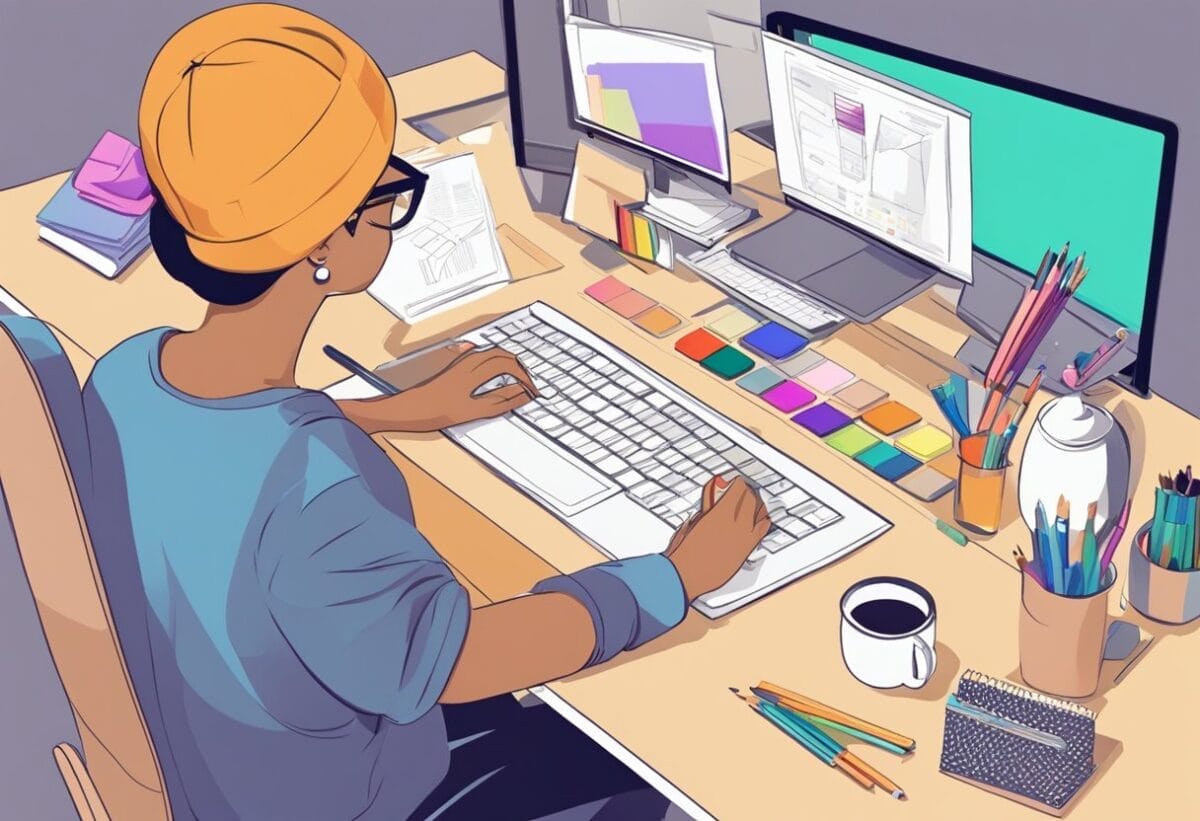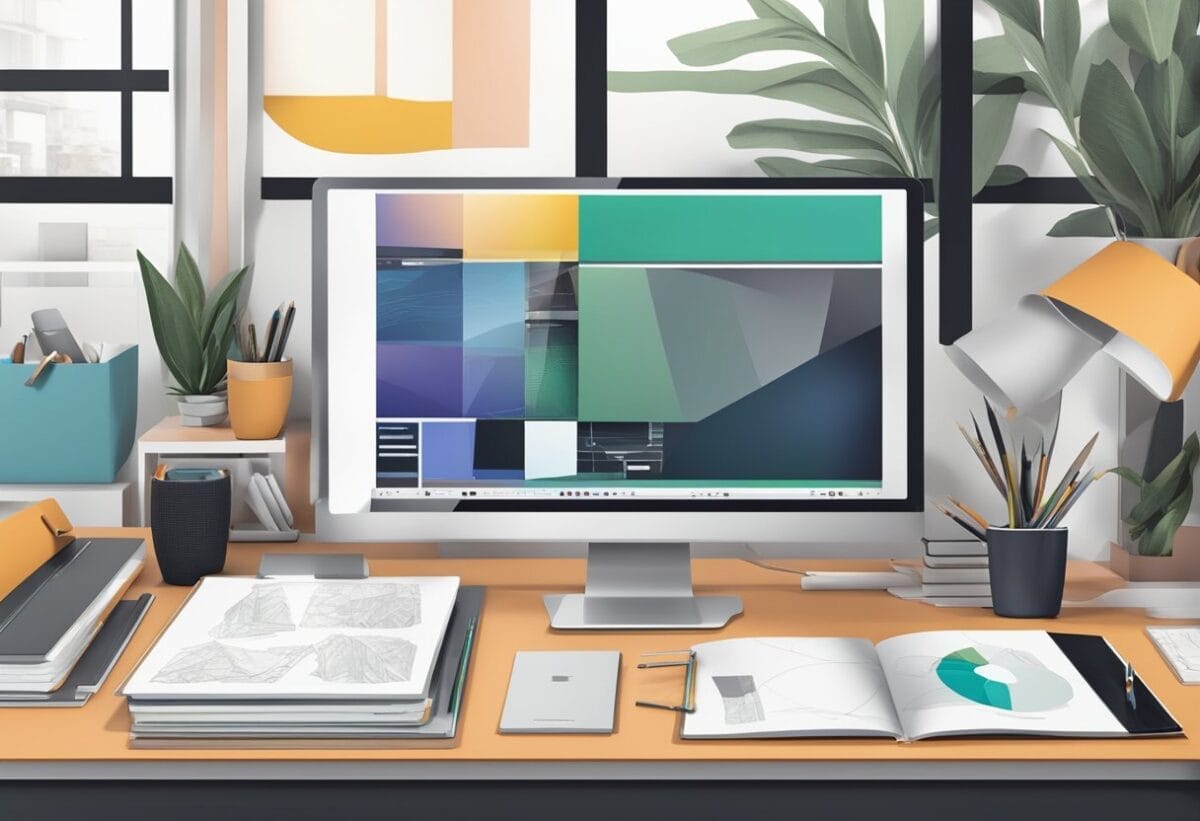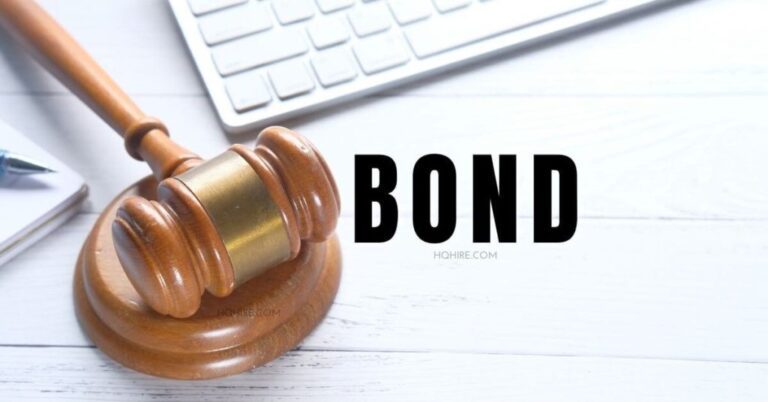Dreaming of merging the worlds of fashion and graphic design? You’re not alone. Many creative individuals aspire to blend their passion for art and style into one fulfilling career.
Whether you’re just starting or looking to shift your career path, you’re about to embark on an inspiring journey. Ready to turn your creativity into a thriving profession?
KEY TAKEAWAYS
- Strong education and skill development are crucial.
- Building a standout portfolio can open doors.
- Sustaining success requires continuous learning and networking.
What Does Fashion Graphic Designer Do?

A fashion graphic designer combines creativity and technical skills to contribute to the fashion industry. You will work on visual elements, create branding assets, and stay updated with current trends.
Key Roles and Responsibilities
As a fashion graphic designer, you’ll have a few key roles and responsibilities:
- You will develop visual concepts that communicate the style and message of fashion brands. This can include designing logos, typography, and packaging materials.
- You will create patterns and prints for textiles. These designs are essential for clothing lines and accessories, giving identity to products.
- You will create marketing materials, design adverts, look-books, and social media visuals to promote collections.
Additionally, you might need to work closely with fashion designers to ensure that graphics align with design visions.

Current Trends and Future Outlook
Staying current with trends is crucial in this field. Today, popular trend for fashion graphic design includes concept of:
- Sustainable fashion
- Eco-friendly designs
You might focus on creating graphics that highlight a brand’s commitment to sustainability.
Digital fashion is another growing area.
- Create and design digital showcases and virtual try-ons.
- Social media marketing by creating engaging content that attracts followers and potential customers.
The future looks bright as the fashion industry continues to evolve. New technologies and platforms will offer more opportunities for your creative input.
Fashion Graphic Designer Salary
Fashion graphic designers often earn different salaries based on their experience and location, and as according to U.S. Bureau of Labor Statistics.
- On average, a graphic designer’s salary is around $58,910 per year.
- Entry-level designers might start at a lower salary, roughly $40,000 per year. This can increase as they gain experience.
- Experienced designers can earn significantly more. Many with advanced skills and years in the industry exceed $70,000 annually.
Freelance designers have varied earnings based on their workload. A steady stream of clients can greatly increase income.
Here’s a quick breakdown:
| Experience Level | Approximate Salary |
|---|---|
| Entry-Level | $40,000 – $50,000 |
| Mid-Level | $50,000 – $70,000 |
| Senior-Level | $70,000+ |
Location affects salary as well. Designers in major cities usually earn more.
- Cities like New York, Los Angeles, and London often offer higher salaries.
Designers working in specialized industries, like advertising or publishing, may also see higher wages.
Your skills and portfolio are key. Keeping up with design trends and software increases your value to employers. This can, in turn, boost your salary potential.
How to Become a Fashion Graphic Designer?
To become a fashion graphic designer, you’ll need a harmonious mix of artistic skills, fashion knowledge, and technical expertise.
Here is a simple step guide for you to succeed in this career.
Step 1: Fashion Graphic Design Education

To become a successful fashion graphic designer, getting the right education is key. This involves enrolling in a suitable design program and focusing on relevant courses.
Choosing the Right Design Program
Investing time in finding the right design education will set a solid foundation for your career as a fashion graphic designer.
- Select a program that offers both fashion design and graphic design courses. Look for schools that provide a degree in design, as this often ensures comprehensive training.
- Research each school’s curriculum to ensure they cover essential skills like Photoshop, Illustrator, and print design.
- Find programs that include internships or hands-on projects can also be valuable. This real-world experience helps you apply what you learn in a practical setting.
- Consider programs with strong industry connections. Networking with professionals can provide insights and opportunities in the field.
- Look into the success stories of graduates to gauge the program’s effectiveness.
Some institutions offer specialized programs for apparel graphic designers.
These courses teach you how to create designs suited for the fashion industry.
Step 2: Skill Development For Fashion Graphic Designer

Developing the right skills is crucial for becoming a successful fashion graphic designer. You need to focus on acquiring both technical abilities and a strong design foundation.
Essential Skills for Fashion Graphic Designer
To become proficient, start with a design degree or enroll in a fashion design program. These programs often include graphic design courses that cover essential skills such as typography, color theory, and digital tools.
- Knowing Adobe Creative Suite is vital. Programs like Photoshop and Illustrator help you create and edit designs. Familiarize yourself with these tools through online tutorials or classes.
- Courses in 2-D and 3-D design will also be beneficial. These courses teach you to visualize your designs in both flat and dimensional forms, which is crucial for garment creation.
- Developing strong illustration skills is important. Practice sketching by hand and digitally to improve your fashion illustration.
- Trends and market research are key. Stay updated with the latest trends in fashion and design. This will help you create designs that are not only stylish but also marketable.
- Networking is also essential. Connect with other designers and industry professionals to gain insights and opportunities. Joining design communities and attending industry events can be very helpful.
Step 3: Building a Strong Portfolio

Creating a compelling portfolio is crucial for standing out in the fashion design industry. Focus on displaying your best work and building an online presence to maximize your visibility.
Showcasing Your Best Work
Choose pieces that highlight your skills and creativity. Select a variety of design work, such as sketches, digital illustrations, and final garments. Show your process from concept to completion.
Organize your portfolio in a clean and professional manner.
- For a physical portfolio, use high-quality paper and a sturdy binder.
- For a digital portfolio, ensure your images are high-resolution.
Label each piece with clear descriptions. Include details about the project, your role, and any tools or software used. This context helps viewers understand your capabilities.
Online Presence and Networking
Creating a strong online presence is essential. Use platforms like HQHIRE, Behance, Dribbble, and Instagram to share your work. Ensure your profiles are up-to-date and reflect your best art and design pieces.
Network with industry professionals and engage with others by leaving comments and sharing their work..
- Join online forums
- Attend virtual events
- Participate in design challenges.
A personal website can further showcase your portfolio.
Include an “About Me” section, contact information, and a blog to discuss trends or your creative process. This makes it easy for potential employers to learn more about you.
Step 4: Breaking Into the Industry

To enter the fashion graphic design industry, you should consider internships and entry-level roles. Collaborating with established brands can also open many doors.
Internships and Entry-Level Opportunities
Internships provide valuable hands-on experience. You learn about real-world design tasks and make connections. You should apply for several internships to increase your chances. Even unpaid positions can be worthwhile.
- Internship offer learning experiences and networking opportunities that can lead to permanent roles.
- Internships also let you understand the work culture and industry demands.
Entry-level jobs are another crucial step.
These positions might include assistant graphic designer or junior designer roles.
- Start by checking job boards, company websites, and industry forums.
Entry-level roles often require the same skills as internships but expect more independent work.
Collaborating with Established Brands
Collaborating with established brands builds your portfolio and professional network. Start by reaching out to brands that align with your style and interests. Having a strong portfolio showcasing your best work is key when approaching these brands.
- Participate in fashion-related events and workshops where you can meet industry professionals. Networking at these events may lead to collaborations.
- Online platforms like LinkedIn can also help you connect with industry insiders.
- Freelancing is another way to collaborate with brands. Offer your services on freelance platforms or directly approach brands with project ideas. This can help you build a diverse portfolio and gain industry recognition.
By focusing on internships, entry-level opportunities, and collaborations, you can successfully break into the fashion graphic design industry.
Step 5: Sustaining a Successful Career

When growing your career as a fashion graphic designer, it is crucial to:
- Keep learning and adapting.
- Build a strong brand and client base.
Both aspects play significant roles in your ongoing success and market presence.
Continuing Education and Adaptability
Fashion trends and graphic design are constantly evolving. To stay ahead, you need to continuously improve your skills and knowledge.
- Take new courses in both graphic design and fashion. Many successful fashion designers attend workshops and conferences to stay current.
Being adaptable is also key. You should be open to incorporating new styles and techniques into your work.
- Use feedback from clients to refine your designs. This approach helps you remain relevant and in demand.
Stay updated on software advancements. Mastering new tools can give you a competitive edge.
- Online platforms offer many resources that can enhance your skills.
Building Your Brand and Clientele
Your brand is your identity in the fashion world. Building a strong, consistent brand sets you apart. Use social media to showcase your work.
- Platforms like Instagram and Pinterest are great for visual content. Share your portfolio and behind-the-scenes processes to engage your audience.
- Connect with other designers, attend fashion events, and join professional groups. These connections can lead to collaborations and new clients.
- Offer exceptional service to build a loyal client base. Good communication and timely delivery are critical. Satisfied clients are more likely to refer you to others and provide repeat business.
By focusing on these areas, you can establish and sustain a successful career in fashion graphic design.
Get your 100% Free online resume and get noticed by potential employers. Start out of the crowded space of millions of remote job seekers and find the remote job that you will enjoy and love.

Join over 11,000+ achievers who are committed to achieving their career goals!






